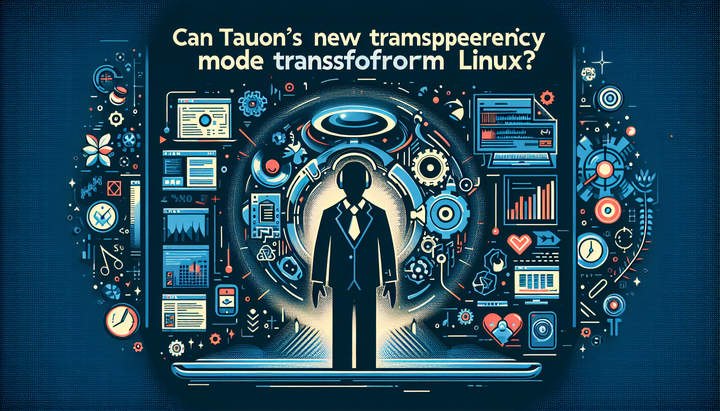Is Cybersecurity Talent Oversupply Hindering Growth?

Introduction: A New Era in Cybersecurity Recruitment
The cybersecurity field has long been heralded as one of the hottest career paths in tech. For years, industry experts warned of a looming talent shortage. However, today a different challenge is emerging – an oversupply of cybersecurity professionals combined with unrealistic hiring expectations. Employers report struggling to connect with highly qualified candidates as ghost jobs, automated HR filters, and AI-driven recruitment practices complicate the hiring process. This evolving landscape forces us to reconsider what defines the right candidate and how organizations can bridge the divide between available talent and actual job openings.
Cybersecurity Talent Oversupply: A Double-Edged Sword
While earlier forecasts predicted a severe shortage of cybersecurity professionals, recent market trends reveal a glut in the number of applicants. Following an era of intense hiring during difficult global circumstances, many talented individuals found themselves repositioning their careers as organizations downsized or rationalized their workforce. This sudden increase in talent availability has both positive and negative implications:
- Increased Competition: With more professionals vying for fewer roles, the pressure is on candidates to distinguish themselves. Employers now have the luxury of choosing from a plethora of applicants, meaning traditional credentials might not be enough to clinch a role.
- Opportunity for Diverse Skill Sets: The oversupply can introduce fresh talent with varied backgrounds. Many of these professionals bring transferable skills like problem-solving, analytical thinking, and communication that are critical to cybersecurity roles.
- Revision of Hiring Standards: As the candidate pool expands, some organizations have begun revisiting their hiring criteria. Overly rigid requirements may exclude capable individuals who can thrive with proper training and mentoring.
This oversupply raises questions about how companies can effectively assess experience versus academic qualifications. Candidates who once relied on a strong academic record may now need to prove practical skills, engage in continuous learning, and embrace certifications that demonstrate readiness for real-world challenges.
The AI Factor: Reshaping Recruitment and HR Filtering
Artificial intelligence is no longer a futuristic concept in recruitment – it is a present-day reality that is fundamentally transforming the hiring process. AI-driven tools are employed to screen resumes, filter out candidates based on predetermined criteria, and even make decisions before a human recruiter takes notice. While this technology aims to streamline recruitment and reduce human bias, it also presents significant challenges:
One major concern is that AI systems may inadvertently sideline qualified candidates who do not perfectly align with the algorithm’s expectations. In cybersecurity, where many competencies are nuanced and experience-based, a rigid algorithm might overemphasize keywords or overlook soft skills such as critical thinking, adaptability, or innovative problem-solving.
Several trends are emerging from the use of AI in recruitment:
- Automation of Initial Screening: AI tools analyze large volumes of resumes to shortlist candidates, potentially omitting those who could excel with additional training.
- Increased Dependence on Certifications: To avoid being filtered out by an algorithm, many applicants now pursue certifications like CompTIA Security+ or CISSP, even if real-world experience and problem-solving skills are their strongest assets.
- Bias and the Risk of Oversimplification: AI systems are only as good as the data they are trained on. If historical hiring data reflect biases or outdated requirements, then the automated process may perpetuate these issues.
Despite these challenges, AI remains a powerful ally in recruitment. Companies can leverage this technology to handle the volume of applications and quickly identify potential candidates. The key is ensuring that human oversight remains an integral part of the recruitment process to validate the findings of AI screening and to re-evaluate candidates based on holistic criteria.
Navigating Ghost Jobs and Unrealistic Hiring Expectations
An additional complication in modern cybersecurity recruitment is the proliferation of ghost jobs. These are job listings that appear online to give the impression of growth or to appease current staff but do not correspond to actual openings. Ghost jobs serve several purposes:
- Market Signaling: Some companies post positions to create the illusion of expansion, aiming to enhance the brand image or to psychologically motivate internal teams.
- Strategic Posturing: Organizations might announce job ads preemptively to deter competitors, or to accumulate a pool of potential candidates for future use.
- Manipulating Online Metrics: HR departments may use job postings to boost site traffic or to satisfy internal performance indicators without genuine intent to hire.
This practice results in wasted time and resources for both job seekers and recruitment teams. Candidates who invest considerable effort into tailoring applications may face rejection without ever realizing the position was never real. For HR teams, ghost jobs can distort market data, complicating strategic decisions regarding talent acquisition. The challenge now is twofold: organizations need to provide transparent communication about vacancy statuses, and candidates must learn to scrutinize job postings critically.
In response to these issues, several recommendations have surfaced for both employers and candidates:
- Organizations should engage in honest assessments of their hiring needs and avoid inflating job descriptions.
- HR teams must work closely with technical departments to set realistic, experience-based criteria that accurately reflect the job requirements.
- Applicants should pursue opportunities for continuous education, build comprehensive portfolios, and network within industry circles to gain insights beyond the written job description.
Emerging Trends in Cybersecurity Talent Acquisition
The shifting dynamics in cybersecurity recruitment are paving the way for several innovative trends set to redefine how talent is acquired and nurtured in the tech sector:
- Embracing Hybrid Skill Sets: The ideal cybersecurity professional is no longer defined solely by technical prowess. Employers value candidates who combine coding skills with strong problem-solving abilities and effective communication. This trend encourages professionals from other fields such as data science, network engineering, and even psychology to cross-train in cybersecurity fundamentals.
- AI as a Collaborative Tool: Rather than entirely replacing the human element in recruitment, AI is evolving to assist recruiters by offering data-driven insights. This hybrid approach allows for a more nuanced understanding of candidate potential, ensuring that standout applicants are recognized despite an unconventional background.
- Flexible Hiring Practices: Some organizations are experimenting with freelance or contract-based arrangements to manage talent peaks and troughs. This model not only provides flexibility but also allows cybersecurity experts to work on multiple projects, enhancing their experience and adaptability.
- Upskilling and Continuous Learning: Given the rapid evolution of cyber threats, continuous training is essential. Organizations are increasingly focusing on in-house training programs and partnerships with educational institutions to build a robust talent pipeline. This strategy helps ensure that even those with limited direct experience can quickly adapt to emerging challenges.
These trends underscore the need for both buyers and sellers in the cybersecurity arena to remain agile. As oversupply challenges persist, the onus falls on organizations to refine their recruitment strategies, and on professionals to diversify and deepen their skill sets.
Key Challenges and Expert Insights
Industry experts have long debated the balance between experience and education in cybersecurity hiring. Recent insights include:
- The Value of Practical Experience: Many cybersecurity professionals emphasize that hands-on experience often outweighs formal education when dealing with real-world threats. This experience builds intuitive problem-solving capabilities that are critical in high-pressure situations.
- Certification vs. Apprenticeship: Surveys indicate that traditional certifications remain a key filtering mechanism in HR software. However, there is growing advocacy for apprenticeship models that immerse candidates in real operational environments, thereby fostering a more responsive learning process.
- The Role of Networking: A recurring theme is the importance of professional networking. Referrals and industry contacts can sometimes overcome the limitations of algorithmic screening, bringing to light talent that might otherwise be overlooked.
These insights suggest that the path forward involves creating a more integrated hiring process where technical skills are evaluated alongside soft skills and potential for growth. A balanced approach, where technology and human judgment complement each other, is essential for overcoming the challenges posed by oversupply and automated recruitment systems.
Conclusion: Adapting to the New Cybersecurity Landscape
The transformation in cybersecurity recruitment requires a paradigm shift in both organizational strategy and candidate preparation. The current oversupply of talent, coupled with the increasing role of AI and the prevalence of ghost jobs, is forcing a reevaluation of what makes an ideal cybersecurity professional.
For employers, the challenge lies in refining hiring processes to recognize and nurture potential rather than relying strictly on traditional parameters. It is imperative to balance technological tools with human insights to avoid missing out on promising candidates. Companies that succeed will likely invest in continuous training programs, foster robust internal networks, and leverage AI not as a gatekeeper but as an enhancer of human judgment.
For candidates, the message is clear: adaptability is crucial. In a competitive and ever-evolving cybersecurity landscape, continuous learning, networking, and a willingness to embrace new technologies will differentiate successful professionals from the rest. By engaging in interdisciplinary training and seeking roles that offer hands-on experience, job seekers can position themselves as versatile and indispensable assets in the digital age.
Ultimately, as the cybersecurity talent pool continues to expand, building a sustainable and responsive recruitment strategy is key. Both industry players and professionals must work together to ensure that the right skills are recognized and nurtured, paving the way for innovation and resilience in the face of modern cyber threats.
This detailed look into the cybersecurity hiring crisis not only highlights the challenges but also outlines a transformative approach to recruitment. In today's competitive market, overcoming the issues of talent oversupply, leveraging AI effectively, and navigating the pitfalls of ghost jobs are more important than ever for both organizations and job seekers alike.



Comments ()